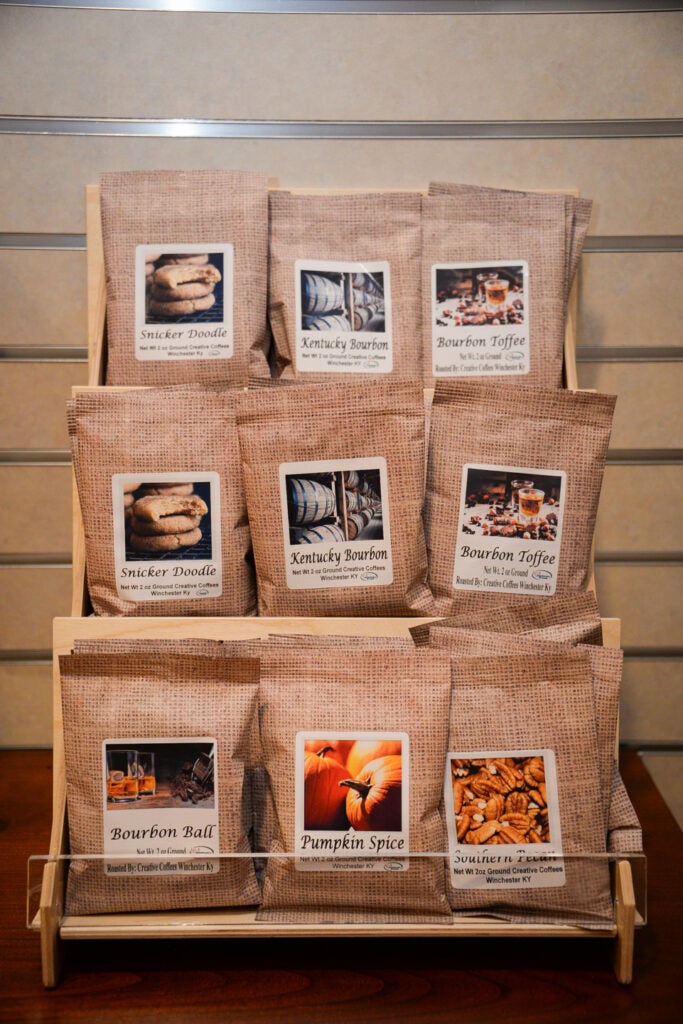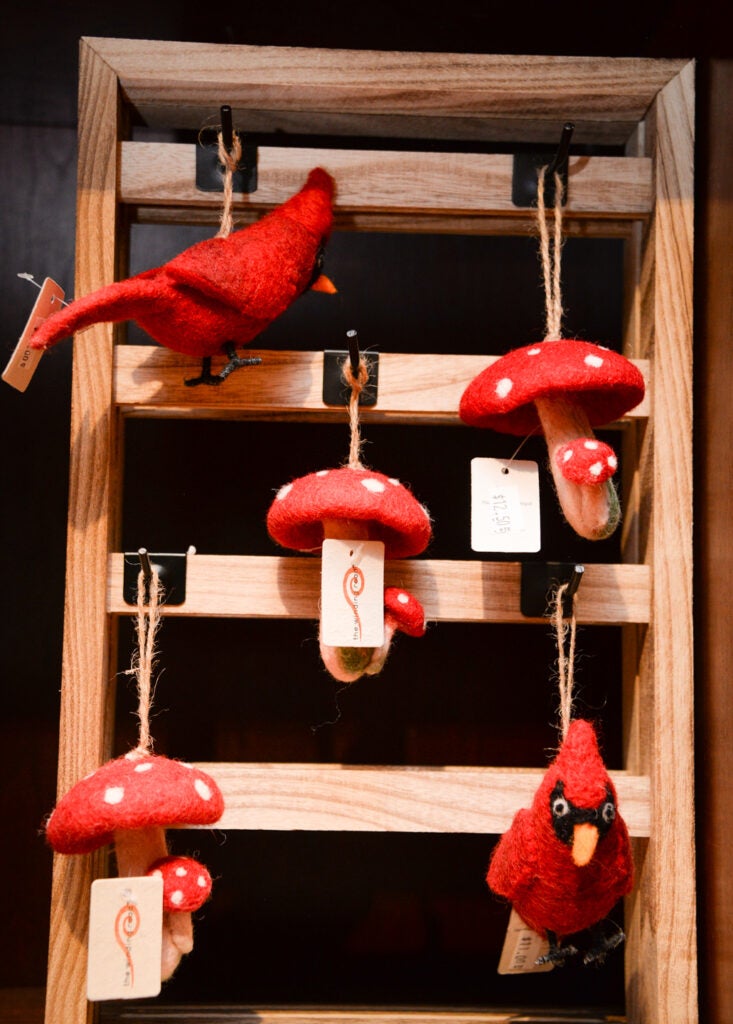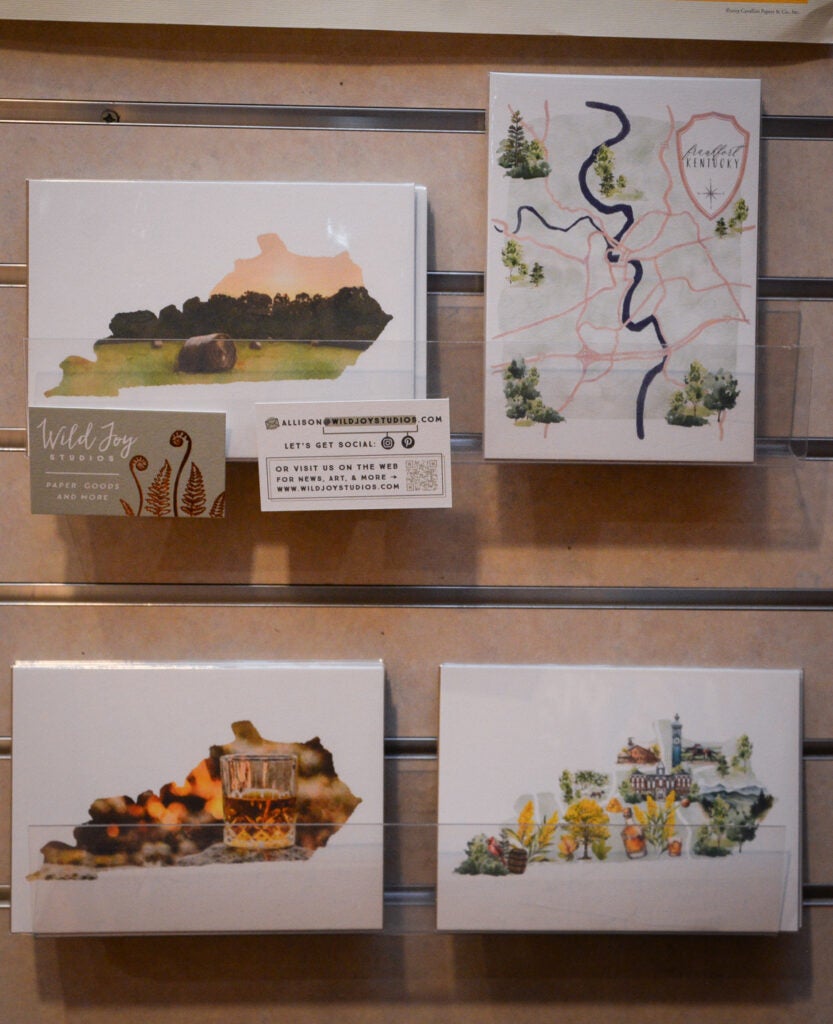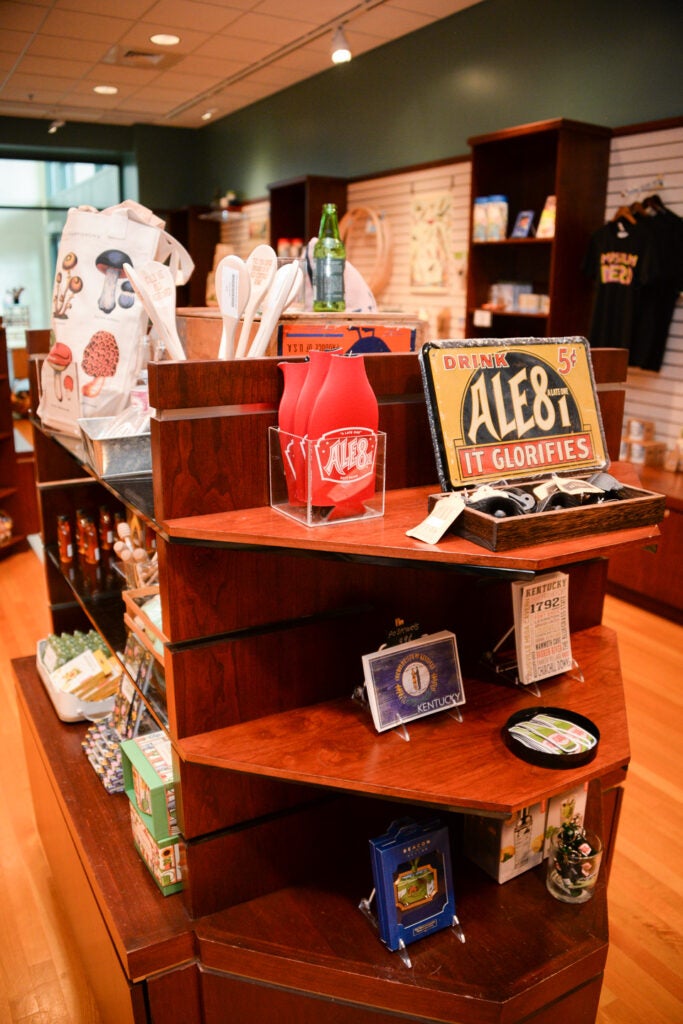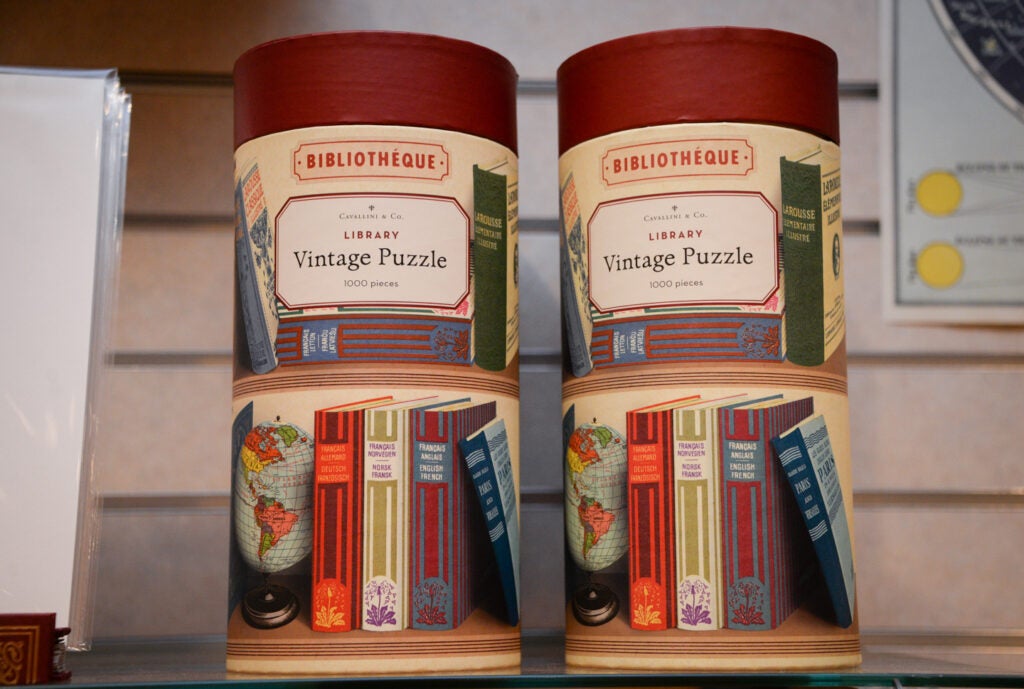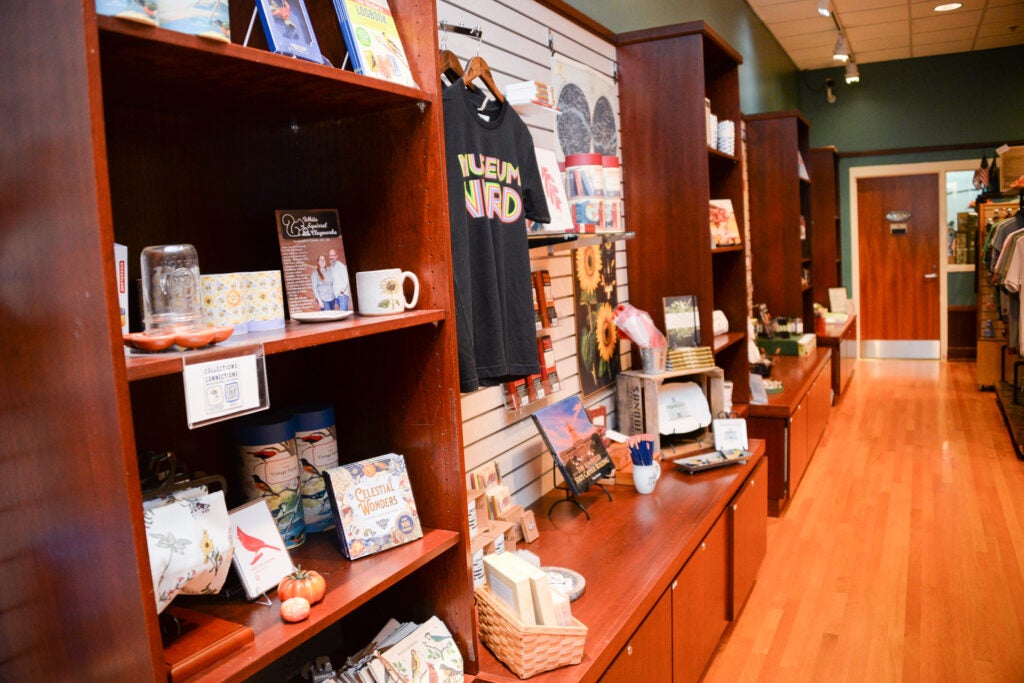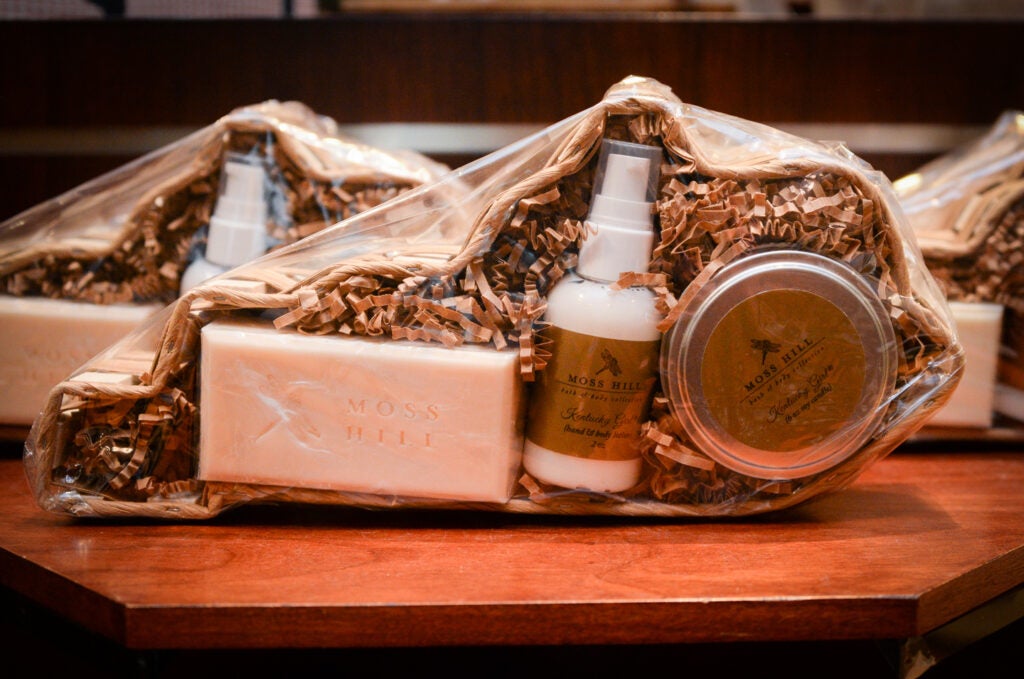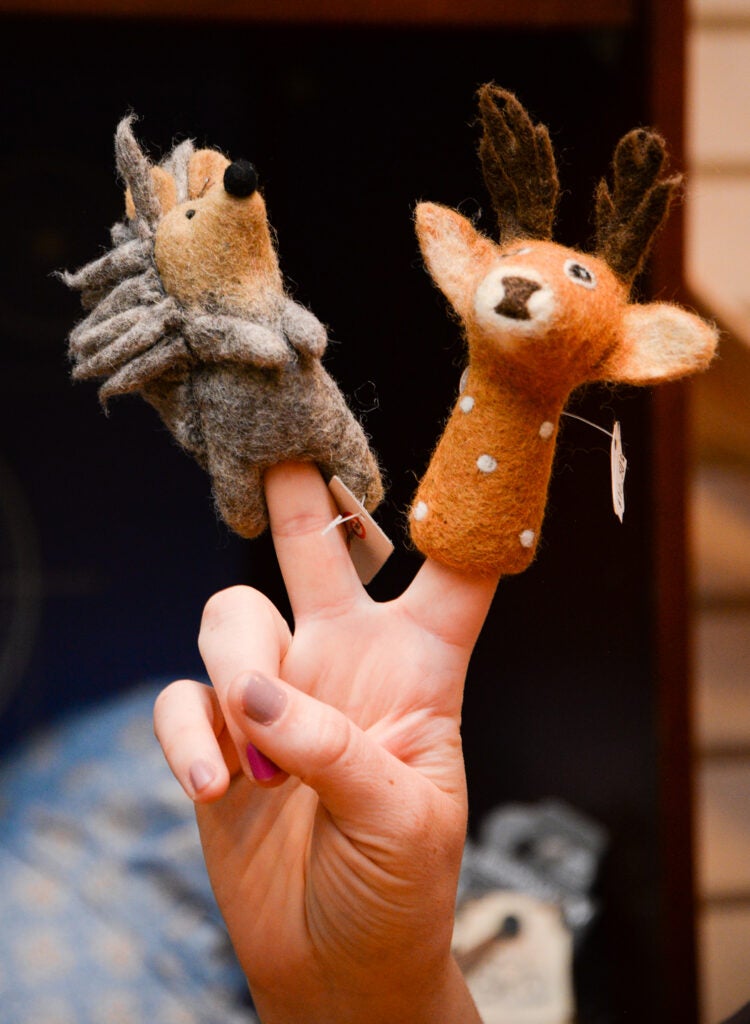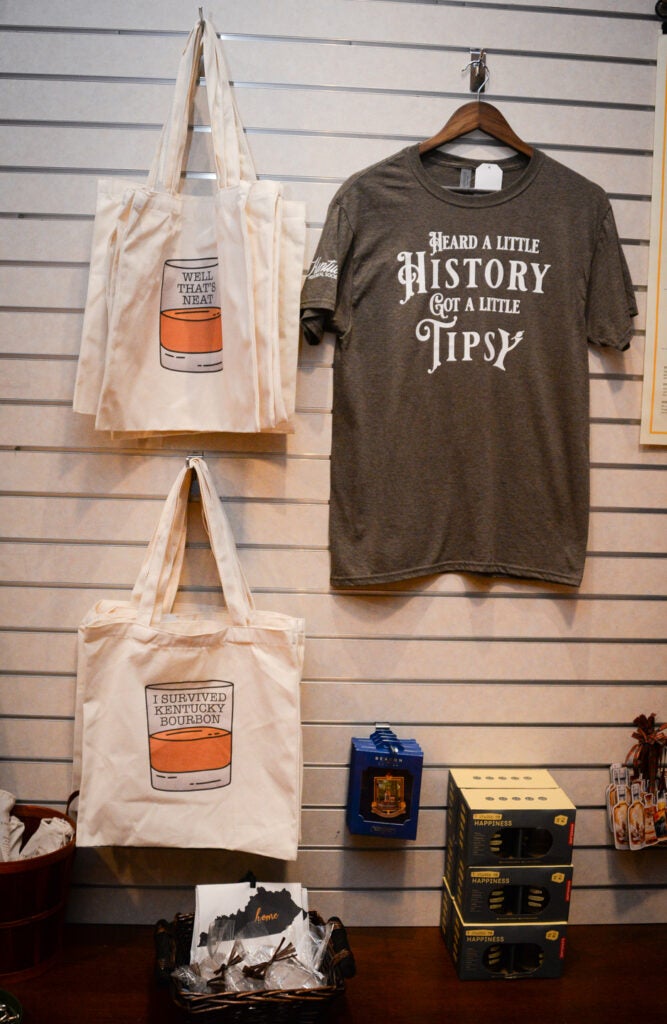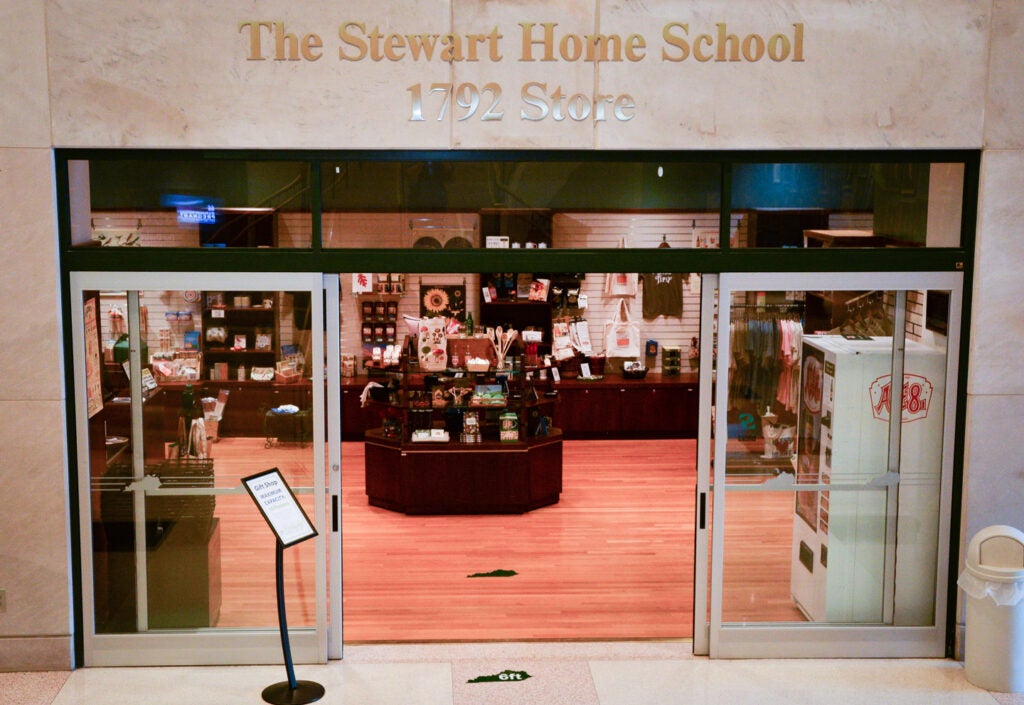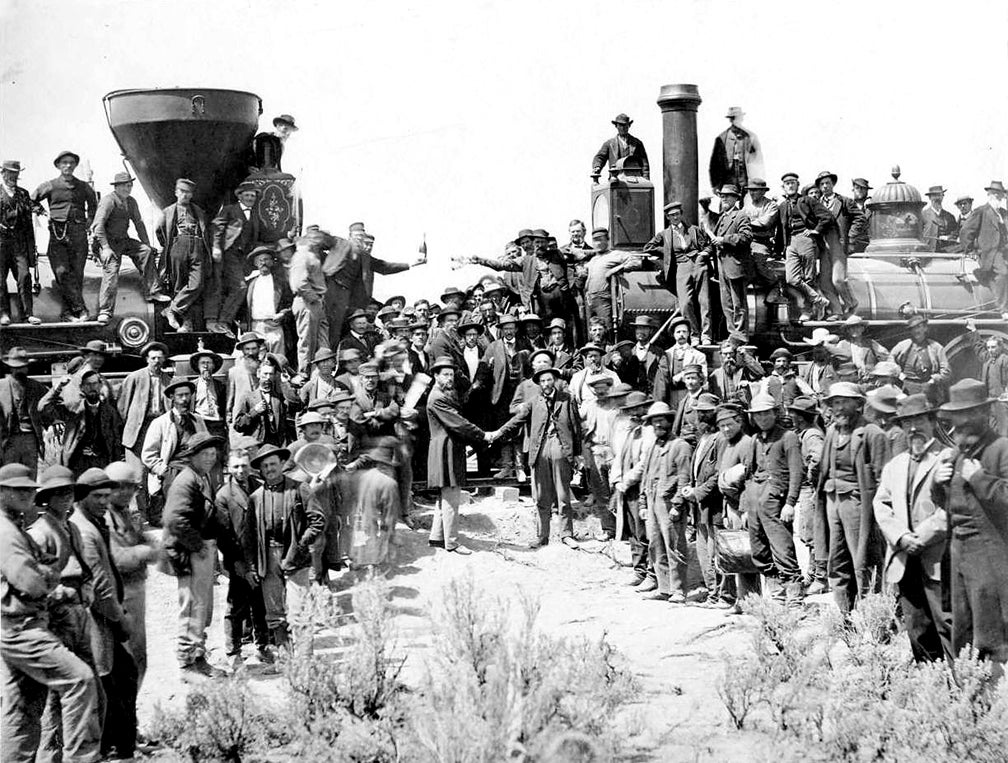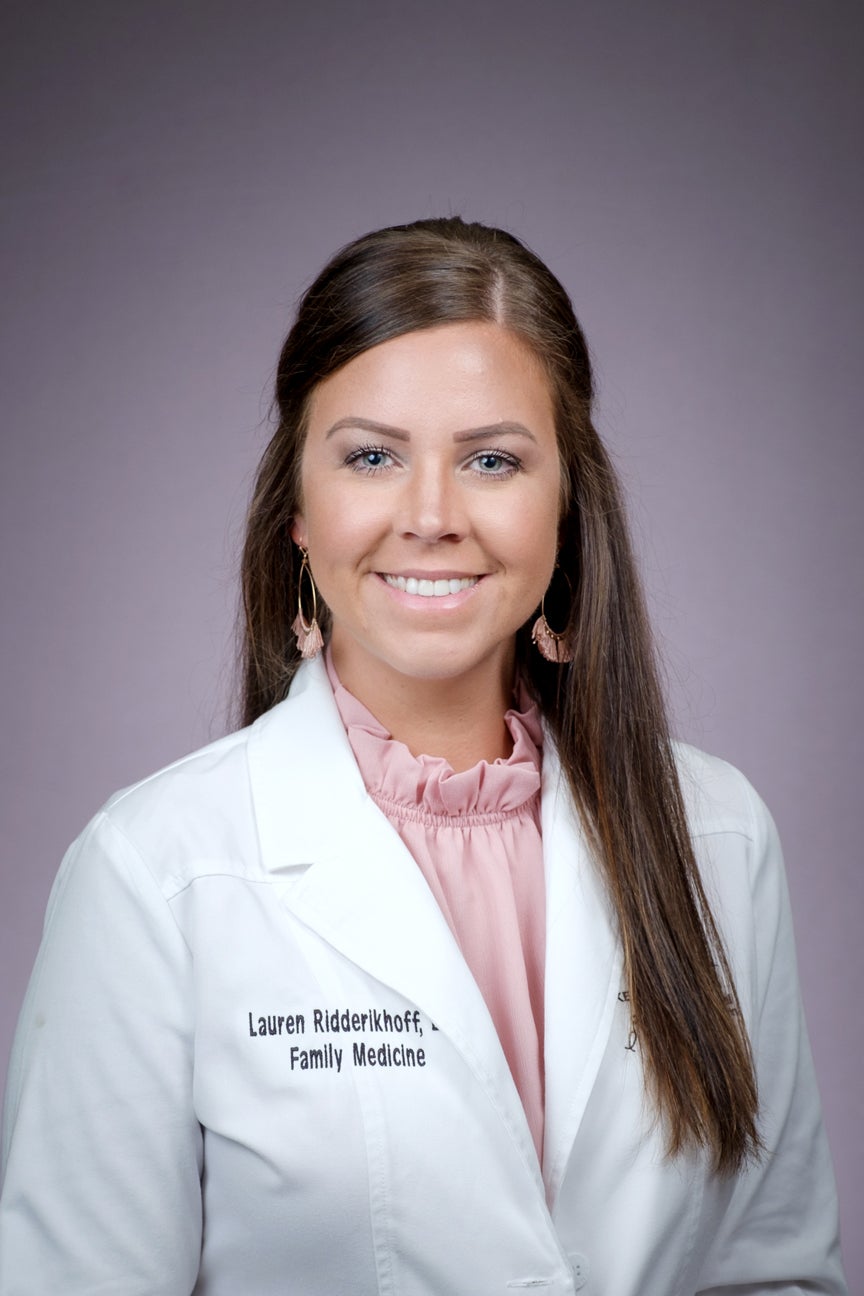By Kristine Vanover-Kilburn
If you’re looking for a piece of Kentucky history to give a loved one this holiday season, look no further than the Kentucky Historical Society’s Stewart Home and School 1792 Museum Store, which offers a bit of local history itself.
In 1995, the Kentucky legislature approved $2 million for the planning, building design and site acquisition for KHS’ current location, 100 W. Broadway St., and a $17.5 million bond was issued for the construction. Later that year, the society broke ground on a 167,000-square-foot complex, including a museum space, research library, offices and other facilities.
Toyota Motor Company’s Manufacturing Plant in Georgetown unveiled the architectural rendering of the new building and donated an additional $1 million to be used toward the construction. The Kentucky Historical Society opened to the public on April 10, 1999.
During the fundraising campaign for the new building in the mid-1990s, significant support of the project came from Dr. John P. Stewart II, who directed Stewart Home and School for 58 years.
In 1893, Dr. John Quincy Adams Stewart, an early champion of special education, founded Stewart Home and School to provide people of all ages with intellectual disabilities an opportunity to achieve the education that they were, at the time, often denied from public schools.
Stewart Home and School, located at 4200 Lawrenceburg Road, occupies the campus of the former Kentucky Military Institute, from which Dr. John Quincy Adams Stewart was a graduate in 1847. The school property also includes the adjoining 850 acres of rural farmland, giving students an expansive, serene backdrop for their educational, extracurricular and social pursuits at the school.
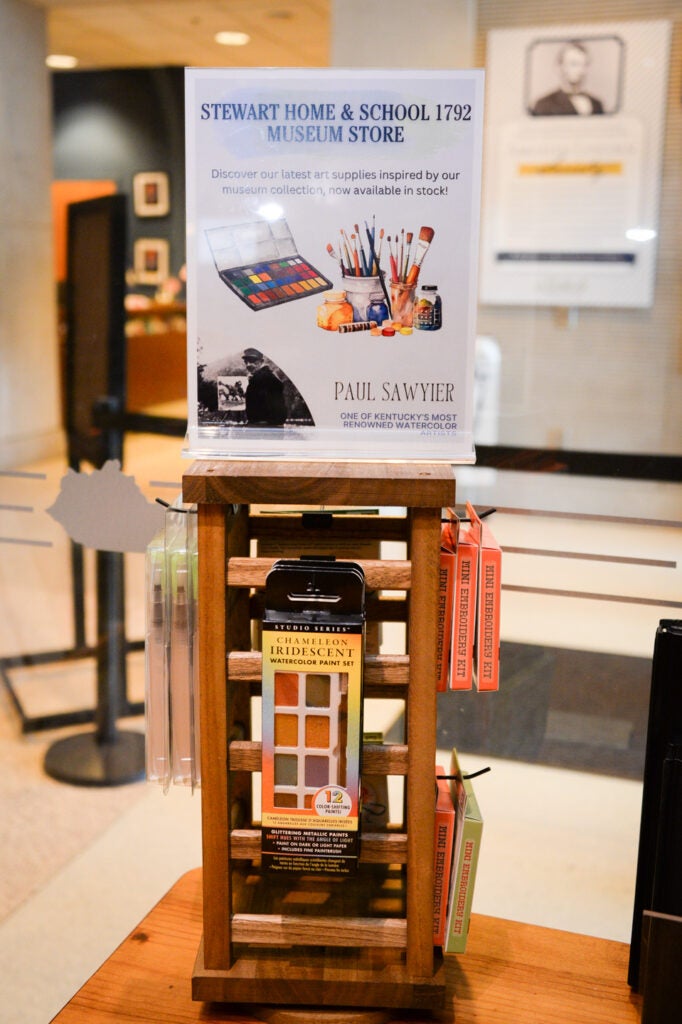
The school offers a one-of-a-kind community where those with intellectual disabilities are appreciated and respected, providing a campus where those who need a special educational environment can continue to learn and maximize their potential.
The mission of Stewart Home and School is to provide complete and total care of the students and fulfillment of all of their needs.
Throughout its 130-year history, Stewart Home and School has been owned and directed by five successive generations of the Stewart family. The contributions provided to KHS when Dr. John P. Stewart II was directing the school were rewarded with naming rights after the completion of the center’s gift shop — Stewart Home and School 1792 Museum Store.
Today, Dr. John D. Stewart, Jean Ann Stewart Banker, Cathy Stewart Brown and Charles W. Stewart continue the family legacy, extending the school’s mission into the future.
Scott Alvey, KHS executive director, said that the Stewart family continues to support the historical society’s mission and the greater community, regularly contributing to historical preservation efforts and other cultural organizations, such as the Grand Theater and Josephine Sculpture Park.
“The 1792 Store helps provide visibility to the home and school, and they, in turn, help KHS connect to the community,” Alvey said.
The store is located on the first floor of the Thomas D. Clark Center. Delaney Thomas, the 1792 Museum Store manager, says they try to stock items that are inspired by the rich history of Kentucky and the KHS museum collection so that guests can take a piece of that history home with them after their visit.
Though they do work with vendors from other locations, such as the Arizona and Ohio based retailers who provide the shop’s selection of gemstones and minerals, support for local artisans and business owners is prioritized when selecting suppliers. Most of the merchandise is made locally in Kentucky or adjacent Appalachian states. Currently, the store carries coffee from Creative Roasters based out of Winchester, as well as mugs and platters designed by Mazie Clark in Louisville. Thomas noted that the honey from Double Barrel Honey in Winchester is a customer favorite.
Printed merchandise is also available from local artists. Currently, prints by Kentucky artist Wild Joy Studios are being stocked in the store. Allison Renee Oliphant, produces her work in Lexington. Her prints are inspired by classic Kentuckian icons. The books currently featured in the shop are primarily from University Press of Kentucky or Acclaim Press, which is also based in Kentucky.
Purchases can be made online and over the phone. However, the products featured online are limited. The 1792 Store location is open Tuesday through Saturday from 10 a.m.to 5 p.m.
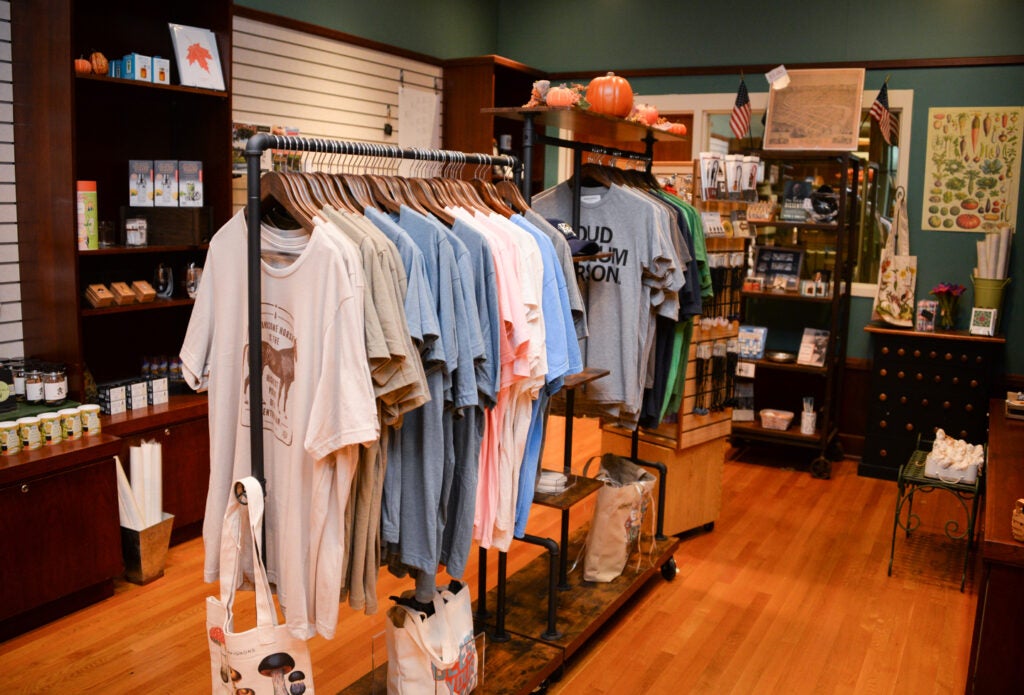
Thomas stated that, as the store manager, she primarily handles the operation of the store, but that she does sometimes have help from local students and volunteers on busier days or during events.
Thomas also said that they participate in educational programs and work with several schools to host field trips at the museum. They also host an annual History Day for homeschooled children. Proceeds from the 1792 Store are used to help fund the educational programs.
“In 2023, over 17,000 students participated in our education programs,” Thomas said. “Often students stop in the 1792 shop after their tour and can connect some of the items for purchase to what they saw in the galleries. We have signs called ‘Collection Connections’ that showcase what item on display or in our catalog inspired that piece of merchandise.”
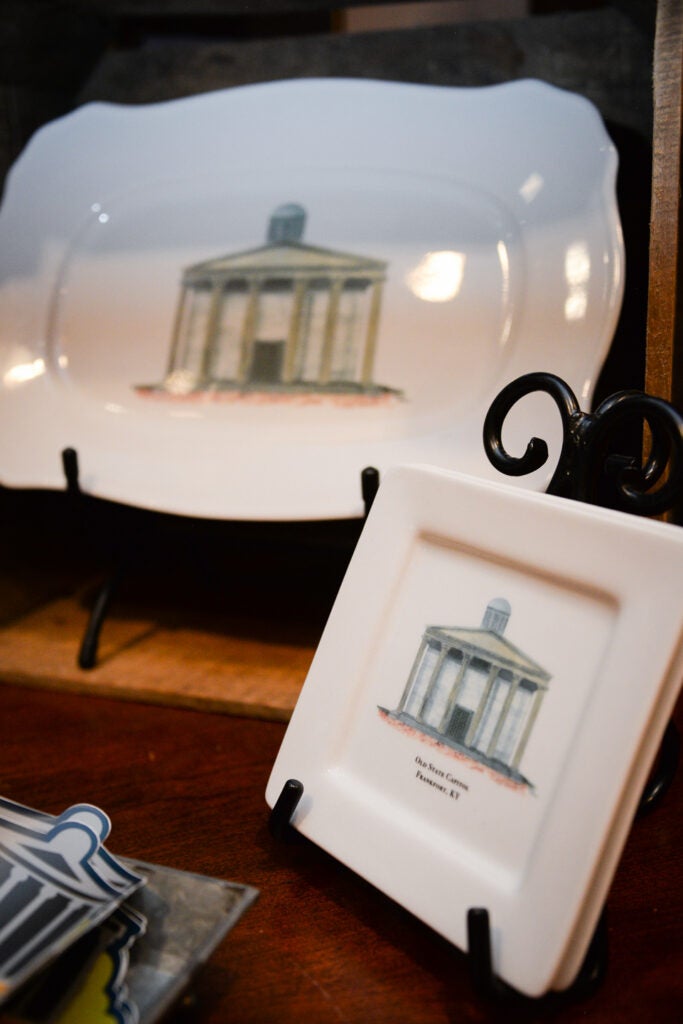
KHS receives most of its funding for programming from gifts to the Kentucky Historical Society Foundation, a fundraising organization with its own board of directors. Foundation activities include the Fund For KHS program, Honorary and Memorial Gift programs and the Kentucky History Half Marathon.
The Kentucky Historical Society is an agency of the Kentucky Tourism, Arts and Heritage Cabinet, an affiliate of the Smithsonian, has full accreditation from the American Alliance of Museums, and is a founding member of the History Relevance Campaign.
The KHS Museum hours are Tuesday through Saturday from 10 a.m. to 5 p.m., and the research library hours are Wednesday through Saturday from 10 a.m. to 5 p.m. Admission for adult guests is $8, and $6 for Veterans and Children ages 6-18. Children younger than 5 years of age are admitted for free. KHS and KJHS members are also given free admission. Admission includes entrance to any of the museum facilities open on the day of the visit.
More information about the Kentucky Historical Society, the museum, or the KHS Foundation can be found at https://history.ky.gov/, and the store catalog can be found at https://history.ky.gov/stewart-home-school-1792-museum-store. Additional information for the Stewart Home and School can be found at https://stewarthome.com/.
KHS history
Kentucky became a commonwealth in 1792, and according to the historical society, recognition of the importance in preserving history came to Kentuckians early on.
In 1836, a group of young, prominent men in Kentucky began to organize KHS to “collect and preserve” articles of information and evidence of facts connected to the early history of the state. The society was incorporated in 1836, and again in 1896, experiencing long periods of inactivity, as well as points of revival and periods of reorganization throughout the years.
Jennie Chinn Morton, a poet and prohibitionist from the Franklin County area began spearheading a revival of the society in 1896, after a seven-year period of dormancy. During that time, the society’s rooms in the Capitol were repurposed by then-Gov. John Young Brown, who directed the society’s collection be gathered and placed into storage.
With support from the members of The Frankfort Lyceum and the Frankfort Society for Colonial Daughters, which Morton founded, the society gained approval to end its suspension from Brown’s successor, Gov. William O. Bradley
KHS reorganized for the final time on June 7, 1897. Morton was elected to serve as the society’s secretary/treasurer, the equivalent of director, and John Andrew Steel, a Woodford County Representative, was elected to serve as the society’s vice president. Gov. Bradley served as president ex officio, a position that had been held by previous governors as well.
Morton founded the Register of the Kentucky Historical Society in 1903 and served as its first editor. She devoted herself to serving the society, writing and editing articles for the register and lobbying for funding from state politicians.
Gov. J.C.W. Beckham first convinced Kentucky legislators to appropriate $5,000 for the operation of the historical society, and KHS received its first fund contribution from the General Assembly in 1906. The society has continued to receive state funding since.
The Old State Capitol became the society’s home in 1920, and Sarah Jouette Taylor Canon took Morton’s position as director of the society after Morton’s death that same year. Canon directed the society through a point of time when the society’s funding and purpose were again under question.
For 26 years, Canon defended the society against attempts to abolish or consolidate it within other state agencies. The society has remained an independent agency of the state while maintaining a non-profit membership operation since 1954.
“Kentucky Ancestors,” a quarterly genealogical publication, was launched in 1965, and the society expanded into the Old Capitol Annex in 1974, coinciding with the opening of the Kentucky Military Museum in the former State Arsenal building. The society also professionalized museum and library management, hiring people educated and experienced as curators and archivists.
Over the years, the KHS story has continued to be one of growth and increased community impact. By the 1980s, KHS had acquired a larger collection than they had the space to exhibit. Most of the society’s collection was kept in storage, in a converted whiskey warehouse, unable to be viewed by the public.
In 1991, under the direction of Dr. James C. Klotter, a campaign to fund a new home for the historical society began with the support of then-Gov. Brereton Jones and First Lady Libby Jones. A new historical center would provide more space for the society’s collection to be displayed and viewed.
Due to the nature of some materials and artifacts, it remains necessary to rotate some items out of the exhibition spaces and climate-controlled storage areas. Other materials, like those acquired for their research value, are generally not displayed, but remain available for researchers to view.
